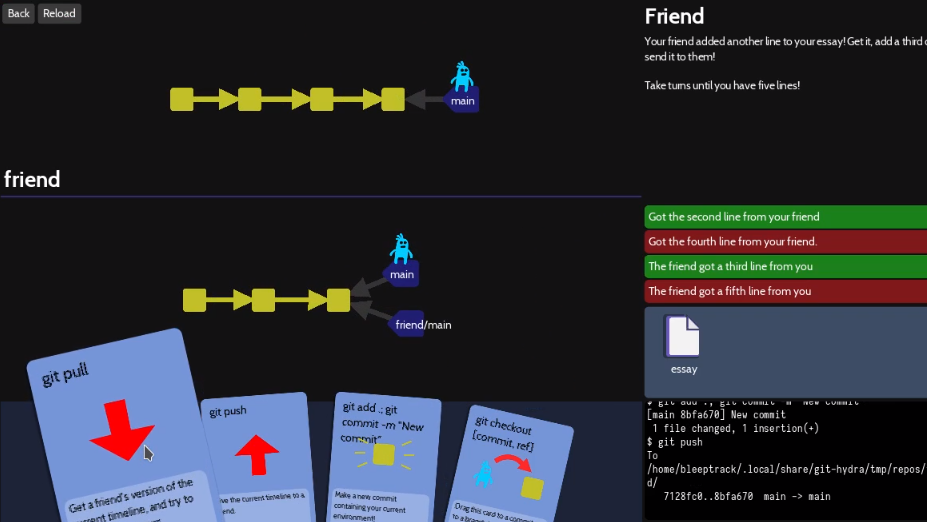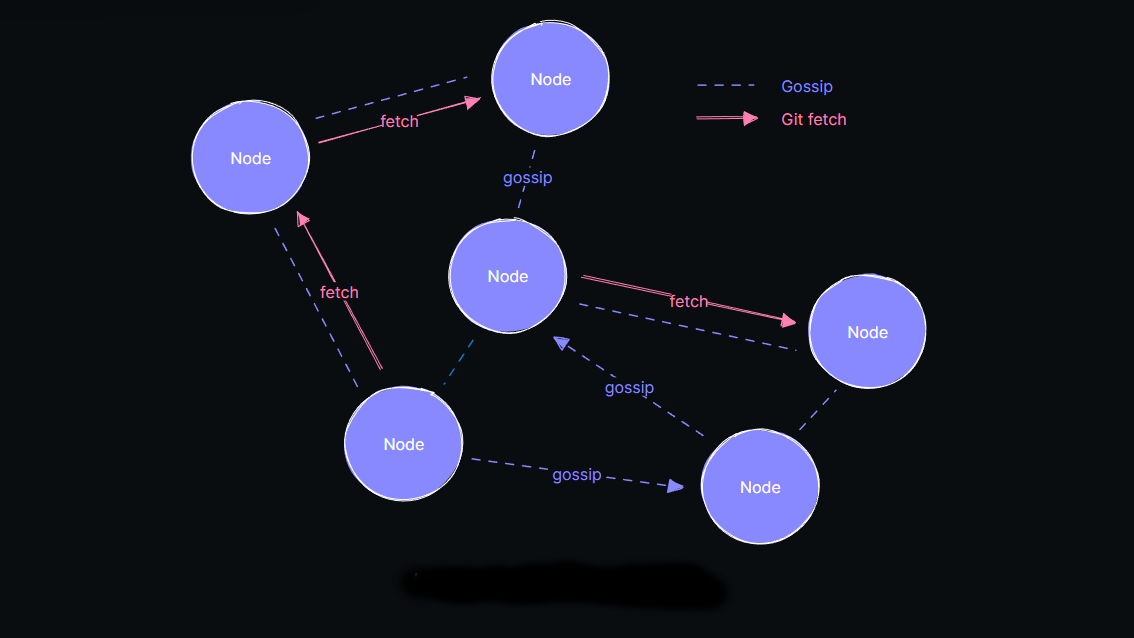#git
I love to see Forgejo getting a big win like this. A couple projects I contribute to use it instead of GitHub. I've thought of switching from GitLab to it for my FOSS projects too. #programming #git #forgejo fedoramagazine.org/fedora-move…
#git ist ja auch irgendwie ein #Dreckstool
❯ git revert --no-commit 9a13096..HEAD
error: The following untracked working tree files would be overwritten by merge:
.ssh/gitlab.example.com
.ssh/gitlab.example.com.pub
.ssh/gitlab.example.org
.ssh/gitlab.example.org.pub
Please move or remove them before you merge.
Aborting
fatal: revert failed
❯ rm gitlab.*
❯ git revert --no-commit 9a13096..HEAD
error: revert is already in progress
hint: try "git revert (--continue | --abort | --quit)"
fatal: revert failed
❯ git revert --continue
CONFLICT (modify/delete): .ssh/.gitignore deleted in HEAD and modified in parent of ec1bcec (do not version keys). Version parent of ec1bcec (do not version keys) of .ssh/.gitignore left in tree.
error: could not revert ec1bcec... do not version keys
hint: after resolving the conflicts, mark the corrected paths
hint: with 'git add <paths>' or 'git rm <paths>'
This has to be the best and most comprehensive post I've ever seen on the backstory and history of the early years of Git. #history #programming #ComputerHistory #git
A Git story: Not so fun this time
Codeberg, la forge en devenir pour les projets libres ?
https://linuxfr.org/news/codeberg-la-forge-en-devenir-pour-les-projets-libres
I put my #Diaspora pod configuration into a public #git repository for others to nitpick learn from. It includes a handy justfile with recipes for managing a deployed pod.
https://git.koehn.com/k3s-home/diaspora
My base justfile is available here, with lots of recipes for finding current versions of software from places like GitHub, Debian, and Docker repos, and automating upgrades, builds, and deployments:
https://git.koehn.com/k3s-home/justfile-k3s/src/branch/main/justfile
Radicle is an open source, peer-to-peer code collaboration stack alternative to GitHub

It leverages Git’s architecture combined with cryptography and a gossip protocol to enable a fully sovereign developer network. All social artifacts are stored in Git, and signed using public-key cryptography. Radicle verifies the authenticity and authorship of all data for you.
The Radicle protocol leverages cryptographic identities for code and social artifacts, utilizes Git for efficient data transfer between peers, and employs a custom gossip protocol for exchanging repository metadata.
Radicle enables users to run their own nodes, ensuring censorship-resistant code collaboration and fostering a resilient network without reliance on third-parties.
Radicle installs on your own Linux, macOS or BSD computer and will connect remotely to other remote peers. But note this likely works using git CLI commands so don’t expect the pretty GitHub interface.
See https://radicle.xyz/guides/user
#Blog, #decentralised, #git, #opensource, #technology
"giton is AI-powered tool for Git."
You say what you want in English and it communicates with OpenAI to turn it into a command, then asks you if you want to run the command.
Gibt es hier Leute die sich gut mit #forgejo, vormals #gitea, auskennen?
Es geht um das Handling von Forks und das synchronisieren dieser.
Siehe hier: https://social.yl.ms/display/e18176ef-9965-03f8-3321-47f655039332
Das technische Problem ist eine Sache, aber es geht auch darum, ob ich das richtig verstehe mit Pull und Push, ich hab nicht viel Ahnung von #Git, weswegen ich hier frage.
cc @Matthias ✔ #Friendica
Can someone run this git clone and send me the output?
git clone https://git.friendi.ca/friendica/friendica-addons.git
Thanks.









